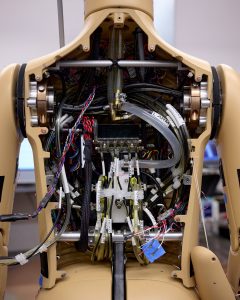El futuro revelado: PACE de la NASA Observatorio
2 min read
NASA’s New PACE Observatory Searches for Clues to Humanity’s Future
In an effort to understand the impacts of climate change and its effect on the planet, NASA has launched a new observatory called PACE (Plankton, Aerosol, Cloud, and Ecosystem). PACE will be a game-changer in gathering valuable data that will help scientists make critical projections about humanity’s future.
The mission of PACE is to monitor and study Earth’s ocean and atmosphere to provide a comprehensive understanding of their interconnectedness and the intricate processes that shape our planet’s climate. By focusing on the ocean’s phytoplankton and aerosols in the atmosphere, the Observatory aims to enhance current knowledge about climate change and its implications for life on Earth.
Phytoplanktons are microscopic organisms that play a crucial role in Earth’s systems. They are responsible for nearly half of the world’s photosynthesis, which directly affects oxygen production and carbon dioxide absorption. By closely studying phytoplankton and their interactions with the atmosphere, PACE will be able to assess the health and resilience of ocean ecosystems, as well as their ability to mitigate climate change.
PACE will also investigate aerosols, which are tiny particles suspended in the air. These particles have a significant impact on cloud formation, air quality, and the overall reflection and absorption of sunlight across the planet’s surface. By understanding aerosol dynamics and their relationship with clouds, scientists can improve climate models, predict weather patterns more accurately, and estimate the influence of aerosols on climate change.
The data collected by PACE will be invaluable for scientists and policymakers alike. It will allow for more informed decision-making regarding climate change mitigation strategies, protection of marine ecosystems, and conservation efforts. By gaining a better understanding of our planet’s intricate systems, we can make more targeted and effective efforts to preserve a sustainable future for humanity.
PACE is expected to be launched in the early 2020s and will join NASA’s fleet of Earth-observing satellites. With its advanced instruments and comprehensive approach, PACE is poised to revolutionize our understanding of climate change and provide valuable insights into the future of our planet and humanity.





